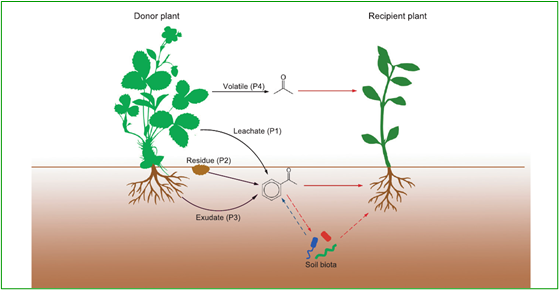5.3. Mechanical, agrotechnical and biological weed management
Direct weed control
Direct control needs to be linked with long term preventative measures to maintain the weed population at a manageable level.
Thermal weed control
Thermal weed control includes application of fire, flaming, hot water, steam and freezing. These techniques control weeds without disturbing the soil and do not bring the buried seeds to the soil surface. Several factors (i.e. temperature, exposure time, energy input) can influence the effectiveness of thermal control, however many of these methods only kill the shoots of target plants, thus repeated treatments may be necessary to avoid regeneration. Based on mode of action thermal control methods can be divided into three groups: (i) the direct heating methods (flaming/burning, solarization, infrared weeders, hot water, steaming, hot air), (ii) indirect heating methods (electrocution, microwaves, laser radiation, ultra violet light), and (iii) freezing as opposite plant stress factor.
- Flaming/burning. Plant processes can be damaged by high temperature through protein coagulation and denaturation, increase of membrane permeability and enzyme inactivation. The thermal dead point for most plant tissues is 45 - 55°C after prolonged exposure. Effectiveness of procedure is mostly influenced by plant size at treatment time less than density of weed plant. The most tolerant species cannot be controlled with flaming regardless of the numbers of applications. Flaming is a successful type of weed control, however due to its high cost and higher effectiveness of other methods, it is not used much in crops. Only seeds present in the windrow and on the immediate soil surface below the windrow are affected by burning. For soil stewardship and preservation of organic matter, burning should only be practiced on windrowed straw or on gathered weed materials from patches within the field known as spot burning.
The most commonly applied fuel in the burners is liquefied petroleum gas (LPG), usually propane, however as renewable alternatives such as hydrogen have been evaluated. Flame weeding (Figure 5.14) can be cheaper than hand-weeding but there is a high machine cost. It is concluded that treating an area of 6-20 hectares brings costs down to a reasonable level but treating smaller areas could also be profitable depending upon the crop.
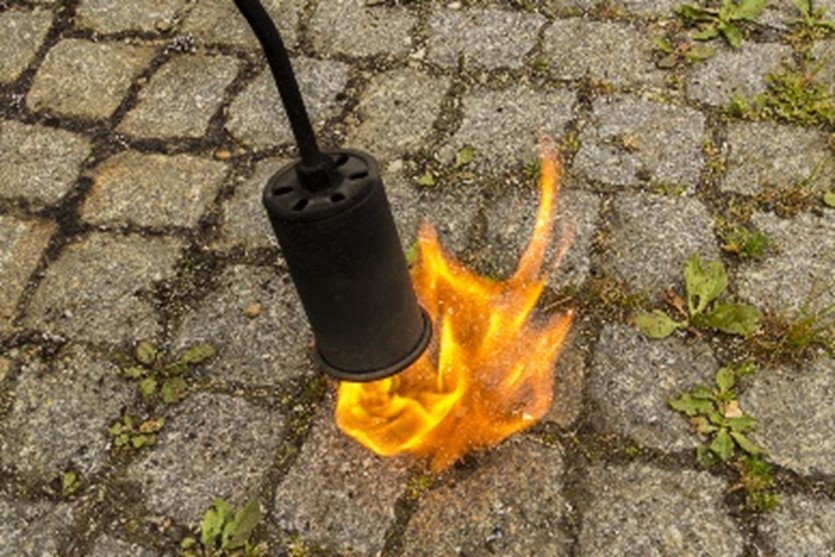
- Steaming. The application of steam for weed control results in a minor reduction in water quantity and provide better canopy penetration compared to hot water (Figure 5.15). Effectiveness of this method is influenced by temperature of steam, weed species, duration of exposure and plant size. Perennial weed species have the ability to regenerate, thus it is necessary to repeat exposure. Seed coat of annual weed species can offer some protection to steam. Mobile soil steaming is commercially applied to manage weeds in the field and glasshouses for controlling both pathogens and weed and for sterilizing the soil. The interest was renewed for the steam sterilization methods as a result of related concern with the usage of the highly toxic methyl bromide. Steam is applied under pressure beneath metal pans forced down onto freshly formed beds for periods of 3-8 minutes. The steam raises the soil temperature to 70-100°C killing most weed seeds to a depth of at least 10 cm, however weed seeds below the treated layer are unaffected. If there is no further following cultivation treatment, weed control can remain effective for two seasons.
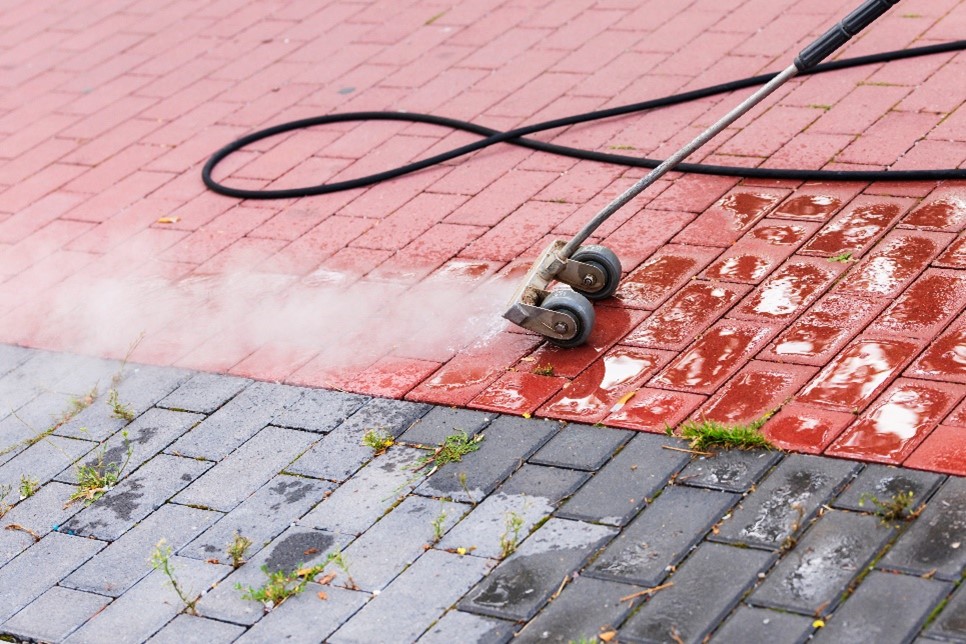
- Solarization.Solarization is a preventive process that exploits the heat of the sun for controlling the weeds. For this, a black or clear plastic cover is laid over the soil surface to trap solar radiation (Figure 5.16). The increased soil temperature kills plants, seeds, plant pathogens and different life stages of pests, thus high soil temperature is declared as a soil disinfection technique. For effective solarization method warm, moist soil and intense radiation is required, that lasts throughout the day. Moisture of soil is required for an effective process. Therefore, irrigation of soil before solarization is necessary. It is also concluded, that the success of soil solarization does not depend on the peak temperature measured in soil but rather on the duration of temperature above a certain threshold (45°C) day by day. For retaining the weed control effect of solarization, the soil must not be cultivated subsequently because otherwise weed seeds present in deeper soil layers (less affected by heating) are brought up to the soil surface and can germinate.
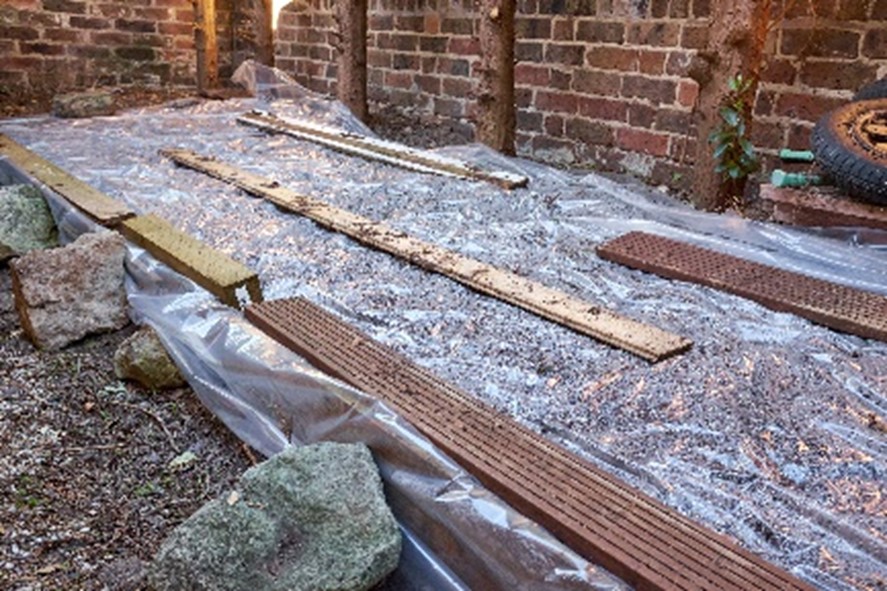
- Infrared radiation.The burner applied in this method uses infrared radiation (IR) to kill the weeds. The burner heats ceramic and metal surfaces that radiate the heat (in the form of IR) towards the weed plants. A ceramic disc heated by gas from a small butane cylinder generates IR when incandescent. Then the so called ‘hot spear’ (projecting metal spike) heated is pressed into the center of the plant to be destroyed and held there for a few seconds (for most weeds. about 1.5 second is enough, however for harder plants increase of time is needed). The intense heat boils the moisture in the plants’ cells that results in them bursting. The leaves will wilt and turn a darker green immediately after treatment. Moreover, the method damages the proteins in the cells, thus in absence of photosynthesis the plant will die. Infrared weeders have the disadvantages of needing time to heat up, the IR panels are sensitive to mechanical damage, and they are more expensive than flame weeders. However, unlike flame weeders, they can be used in situations where an open flame would be extremely dangerous.
- Direct heat.Before application of direct heat for destroying weed seeds in field soil, the soil is cultivated and set in ridges. The worked ridge of soil is lifted, passed through a chamber heated to 68-70 °C by a diesel-fired burner, and then placed back onto the ground, thus providing a band of weed free soil. The depth of treatment ranges from 10 cm for shallow rooted crops to 25 cm for potatoes. The dry heat system comparing to steaming allows faster coverage of a filed.
- Electrocution.There are two types of the systems used for the electrical treatment. The „spark discharge” method applied high-voltage, short-duration pulses (e.g. 25–60 kV, 1–3 μs) for weed control, plant thinning and the acceleration of ripening. The „continuous contact” method applies a metal applicator connected to a high-voltage source (e.g. 15 kV, 54kW, 30 Ampere). Electric current flows in a closed circuit through the plants into their roots, through communicating roots into neighboring plants, and from there back into a current collector at the soil surface. In such a circuit, the plant forms a resistance. The electric voltage damages the chlorophyll of the touched plants and kills the plant cells. This method is used for pruning and desiccation of root crop foliage, as well as area wide weed control and row crop thinning.
- Freezing (cryogenic weed control).Two different media are applied for the freezing treatments: liquid nitrogen and carbon dioxide snow (dry ice). The cryogenic system applies liquid nitrogen to target weeds through a modified sprayer and then crushes the weeds with a ballasted mechanical roller. Liquid nitrogen is more effective than carbon dioxide, however neither is as effective as flaming. Freezing is only advantageous where there is an obvious fire risk from flaming.
There is some other thermal weed control technics applying infrared radiation, microwave radiation, electrostatic field, irradiation, lasers or ultraviolet light, however these methods are not detailed in this chapter.
Mechanical weed control
A wide range of mechanical weeders from basic hand tools to tractor driven devices are availabe for farmers. These include cultivating tools (i.e. hoes, harrows, tines and brush weeders), cutting tools (i.e. mowers and strimmers) and implements (i.e. thistle-bars) that perform both. Basically, complete burial of seedling weeds to 1 cm depth and cut them at or close to the soil surface is the most effective mechanical method of weed management. Crop and weed population determines essentially the type of implement and the timing/frequency of its application providing effective weed control. For example, fixed harrows are more suitable for arable crops, while others like inter-row brush weeders may be more effective for horticultural use. Disadvantages of mechanical weed control include low work rates, delays due to wet conditions and the subsequent risk of weed control failure as weeds become larger. Weed control is not necessarily better at earlier weed stages because missing late germinating weeds can survive the treatment. The additional cultivations associated with mechanical weeding could harm soil structure and possibly encourage soil erosion. The increased mineralization of soil nitrogen due to cultivation can be a problem or an advantage for farmers.
- Hand tools. Removing weeds by hand is often the most effective way to prevent weed from spreading and therefore becoming a serious problem. Hand tools are more effective for annual rather than perennial weeds due to its capacity of vegetative reproduction. Manually operated weeders are classified as follows:
- small tools: They are traditional hand-held type hoes applied by the farmers. Although these tools are appropriate for removing weeds between plants and are very effective, operation is only possible in squatting posture and has very low work output. Hand hoes, push hoes and other traditional methods of hand-weeding are still used worldwide in horticultural crops. Hand-weeding is often used after mechanical inter-row weeding to deal with the weeds left in the crop row. Application during the heat of the day in bright sunlight is the best, because under this weather condition weeds desiccate quickly. Recovery or survive of weeds in rainy weather and wet cloddy soils can be happened.
- spades or chopping hoes: These weeders have straight, curved or pronged blades. Weeds are removed by digging, cutting and uprooting. These are operated in the bending posture. The operation is normally slow and tiring.
- long handle tools: Long handle tools have a soil working tool fixed at the end of a 1.5 to 2 m long handle. These tools are operated in push, push-pull or pull mode, and in standing posture. These are designed to work under friable soil moisture conditions and give high work output at the early stages of crop growth when weeds are small.
- Harrows. Harrowing is a traditional form of mechanical weed control (Figure 5.19) for dealing with annual weeds but is ineffective against perennial and established deep-rooted weeds. For giving the crop an early advantage, killing the first emerging weeds by spring tine, chain or drag harrows, blind or pre-emergent harrowing can be carried out after drilling but before crop emergence. Early harrowing is successful in case of dry weather but soil moisture is adequate. Disadvantage of blind harrowing is the low efficiency if few weeds emerged and sometimes the slow crop emergence. Harrows also can be applied post-emergence, however, in this way it can cause crop injury. Increasing the working depth from 10 to 30 mm doubles the number of uprooted plants and is further improved by higher soil moisture and faster working speeds. Sorting action of tines increases with wider tines and slower forward speed, while throwing action increases with forward speed, working depth and tin width.
- Chain harrows with round and/or shuttle shaped links bury the weeds but do not pull them up. They are especially effective on light soils and prior to crop emergence, or in short crops. Tine weeders with either rigid or spring-loaded tines, superficially cultivate the whole soil surface and cause less crop damage. They are more effective on lighter soils and less successful on heavy land.
- Weeders fitted with flexible tines (flexi-tines) can be used selectively at the late tillering stage of cereals when the dense crop foliage forces the tines into the inter-row. It is the most effective when weeds are in white thread (weed that have germinated but not emerged) or cotyledon stage. Advantages of flexi-tines are fast speed operation, break of soil crusts, lifting of sections over crop without injury.
- Torsion weeders, with pairs of tines set either side of the crop row offer more precise inter-row. Crops must be extremely well-rooted with sufficient row spacing. Optimal crop stage for application of Torsion weeders is 2+ leaves and very well rooting.
- Rotary-tine weeders, with two ground-driven ‘star’ or ‘spider-tine’ rotors covering each row, also allow inter-row weed control. The angle of the rotors can be set to move soil away from, or towards the row; the latter ridging up the crop to bury small intra-row weeds.



- Tractor hoes. Tractor hoes cut through the soil at 2-4 cm depth by an ‘A’ or ‘L’ shaped fixed, vibrating or revolving. Increasing the working depth does little to improve weed kill, but higher forward speed increases soil covering of weeds and reduces survival. Soil structure is important: in rough soil weeds may continue to grow in the lumps of soil lifted by the hoe. Desiccation on the soil surface is a critical factor in preventing weed regeneration, and wet conditions after hoeing can decrease the level of control. Hoeing is particularly effective against mature weeds. Hoe weeders control weeds within the inter-row. The shares undercut everything, so it is necessary to steer the hoes very carefully between the crop rows. A good seedbed and precise drilling of the crop are prerequisites for successful hoeing. For avoiding the removal of significant number of crop plants and the covering them by soil, different types of protectors can be fitted. These may take the form of discs, plates or protective hoods.
The powered rotary hoe is PTO (power take-off) driven and fitted with rotating L-shaped blades on a horizontal axle (Figure 5.20). The width of the rotor can be adjusted to different row widths, thus more intensive cultivation of the soil can be performed and can deal with larger weeds. The rotary hoe serves two basic functions: (i) removing small weeds, and (ii) loosening crusted or compacted soil to aid in crop emergence. A further development has been the rotary ground driven weeder or rolling cultivator with usually two ground driven ‘star’ or ‘spider tine’ rotors covering each row. The rotary hoe causes very little disturbance of crop residue, thereby enhancing infiltration and preventing erosion. Its use is generally limited to large-seeded crops such as corn and soybeans, because these crops are planted relatively deep and have root systems that develop fast enough to anchor the young seedlings.
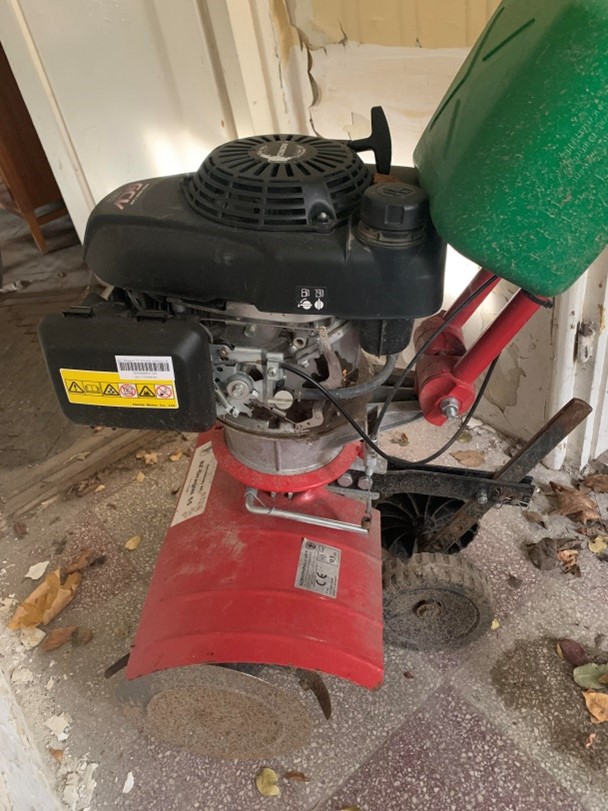
- Brush weeders. The brush weeder (Figure 5.19) is primarily intended for inter-row weeding of vegetable crops, however application in cereals also can be performed. Two main types of brush hoe have been developed: (i) with disc brushes operating in the vertical plane on a horizontal axis, and (ii) with circular brushes operating in the horizontal plane on a vertical axis. In general, the brushes are made of fibreglass and are flexible. These weeders working very superficially mainly uproot but do also bury or break weeds. A protective shield panel or tent can be used to protect the crop. When using horizontal-axis brushes, their rotation speed should be only slightly faster than the tractor speed, otherwise too much dust will be generated. For brush hoe on a horizontal axis, working depth is the most important factor in ensuring good weed control. Tractor speed, brush velocity and soil conditions interact to determine the working depth. A higher rotational speed will not improve the effect; however, the bristles will wear out more rapidly. It has the advantage that it can be operated under moister soil conditions than a tractor steerage hoe. When the soil is too hard, the brush weeder will remove only the part of the weeds above the soil, and the weeds will readily regrow. Application on moist soil, the effect will diminish as a result of soil sticking to the bristles. Some models of vertical-axis brushes can have the angle, rpm and rotating direction of the brushes adjusted. Vertical-axis brushes can be adjusted to throw soil towards the crop row or to remove soil and weeds away from the row.

- Mowers, cutters and strimmers. These methods are commonly used in turf, and can be used in vineyards, in orchards, in pastures and in forage crops if used in the appropriate way. Where weeds are much taller than the crop it may be possible to ‘top’ the weed and at least prevent further seeding. Although, cutting and mowing techniques enable us to control the size of weeds and their seed production and to minimize the competition between weeds and crops. Hand held and wheeled strimmers offer the potential to cut down seedling and larger weeds pre-emergence overall, or post-emergence between the crop rows without disturbing the soil surface. These techniques are seldom efficient enough to obtain a total weed control. Cutting and mowing weeds reduces their leaf area, slows their growth and decreases or prevents seed production. Repeated mowing reduces weed competitive ability, depletes carbohydrate reserves in the roots, and prevents seed production. Some weeds, mowed when they are young, are readily consumed by livestock. Mowing (Figure 5.22) can kill or suppress annual, biennial and perennial weeds and help restrict their spread. A single mowing will not satisfactorily control most weeds; however, mowing three or four times per year over several years can greatly reduce and occasionally eliminate certain weeds. Regular mowing helps prevent weeds from establishing, spreading, and competing with desirable forage crops.
| Implement | Positive weed control effect | Negative weed control effect |
|---|---|---|
| Plough | Disrupts growth and seed production. Buries seeds produced this year and buries perennial weeds and their below ground root/stem systems. | Weed seeds from the seed bank are moved up to the soil surface. |
| Cultivator/Disc cultivator | Disrupts weed growth and seed production. Buries seeds produced this year and buries /fragments perennial weeds and their underground root/stem systems. | May stimulate shoot development from below ground root/stem systems of perennial weeds. |
| Harrow | Destroys/kills small weed plants. Fragmenting root/stem parts of perennial weeds near the soil surface. | Stimulates weed seed germination. May spread viable root/stem parts of perennial weeds. |
| Roller | Improves germination conditions for the crop. | Improves germination conditions for the weed seeds. |
| Weed harrow | Covers small weed plants with soil and/or uproots them. | Stimulates weed seed germination. May more or less damage the crop. |
| Inter-row cultivator | Covers small weed plants with soil, uproots them or cuts them off. | May damage the crop. |
| Brush weeder | Covers small weed plants with soil or uproots them. | May damage the crop. |
| Weed mower | Cuts of weeds in growing crops. | If used after stem elongation, the crop will be damaged. |
Mulching
Mulch is a layer of various material applied to the soil surface. The mulch provides a physical barrier on the soil surface, blocks nearly all light reaching the surface. It keeps soil surface shaded and cool, reduces daily fluctuations of soil temperature, thus weeds emerging emerge under the mulch do not have sufficient light to survive. For example, when a cover crop is killed by extreme temperature, mowing, or rolling, their residues left on the soil surface as a mulch. Effectiveness is depending on the type of weed. For example, small-seeded broadleaf weeds sprouting is effectively blocked by a 2–3-inch-thick layer of cover crop residues. However, larger-seeded broadleaf seedlings, grass seedlings, and perennial weed shooting from buried rhizomes and tubers get through, but their growth can be delayed by residues of a high biomass cover crop. The mulch effect can be enhanced by the release of allelopathy substances from the decaying residues. Moreover, mulch provides habitat for ground beetles and other predators of weed seeds, as well as microorganisms that can attack and kill weed seedlings. There are different types of mulches according to the nature of the soil covering material: organic (leaves, grass clippings, peat moss, wood chips, bark chips, straw mulch, pine straw, biodegradable mulch, cardboard/newspaper) and synthetic (rubber, plastic, polypropylene and polyethylene, carpet, colored mulch). Mulches can be classified in the following way, as well:
- Sheeted mulches. Black polyethylene mulches are widely used for weed control in organic systems, however they are generally not practical for lower-valued, large-scale field crops. Plastic mulches have dual efficiency, they selectively filter out the photosynthetically active radiation (PAR) and let through infra red light to warm the soil (thermal weed control). Regarding the colour of the mulch it is concluded that white and green coverings had little effect on the weeds, however brown, black, blue, and white on black (double colour) films prevented weeds emerging. The latter has the advantage, that the higher rate of light reflectance is beneficial to the crop. Plastic and other durable mulches have the drawback of not degrade in field. Mulches made from paper (Figure 5.20), non-woven natural fibres and degradable plastics have the advantage of breaking down naturally and can be incorporated into the soil after use. Correct laying of the paper can avoid damage provided by rain or wind. There can be additional environmental benefits if the paper mulch is made from recycled materials such as cardboard cartons. In January 2018, the European Standard EN 17033: “Plastics–Biodegradable mulch films for use in agriculture and horticulture–Requirements and test methods” was released. The standard was developed by the European Committee for Standardization, Technical Committee CEN/TC 249 Plastics and applies to all European Union countries plus Macedonia, Norway, Sweden, Switzerland, Serbia, Turkey, and the United Kingdom. This standard regulates the requirements for biodegradable plastic mulch films (BDMs): their composition, biodegradability in soil, effect on the soil environment (ecotoxicity), mechanical and optical properties, and the test procedures for each of the listed categories. It does not apply to mulch films that are being removed from the fields after use.
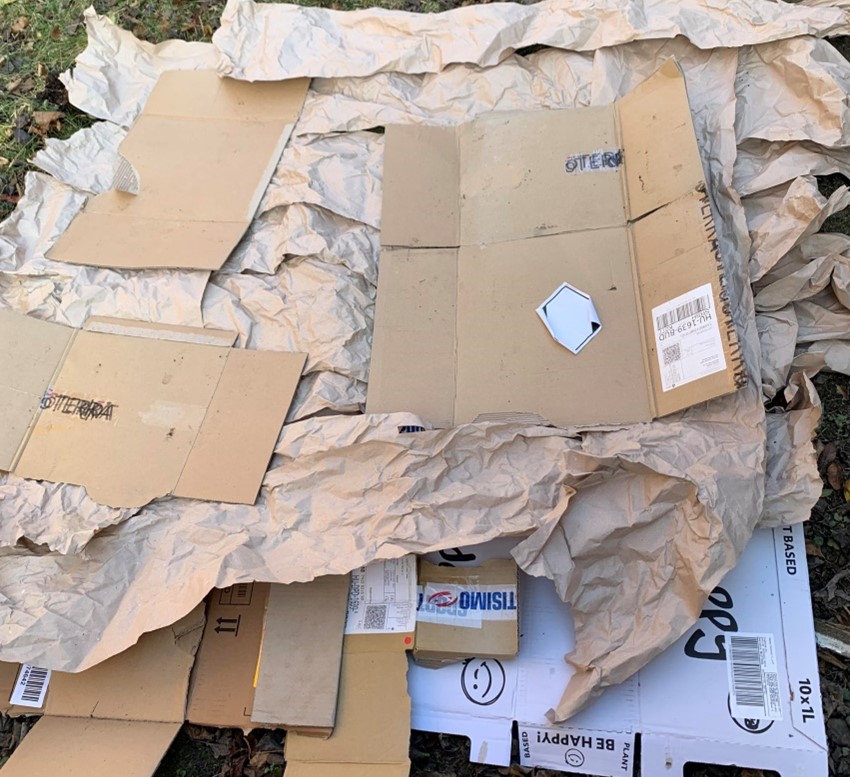
- Living mulches (groundcovers). Living mulch consists of a dense stand of low growing species (Figure 5.21) established prior to or after the crop (i.e. undersowing of cereals with clover and grass) to slow the development of weeds and provide other benefits (nitrogen fixation, protecting soil from water and wind erosion, increase enemies of crop pests). Living mulches control weeds in two ways: When they are seeded before weed establishment, they suppress weeds by competition. In some situations, the allopathic properties of living mulches can be used to control weeds. It has been argued that annual weeds would provide a natural ground cover if managed properly. Living mulches are sometimes referred to as cover crops, but they grow at least part of the time simultaneously with the crop. Cover crops are generally killed off prior to crop establishment. Often, the primary purpose of a living mulch is that of improving soil structure, aiding nutrition or avoiding pest attack, and weed suppression may be just an added benefit. Disadvantages of living mulch is, that it competes for nutrients and water with the main crop and this can reduce yields. Although leguminous cover crops have large biomass production and turnover, they are not likely to increase soil organic matter. This is because legumes used as living mulches have greater N contents and a low C to N ratio. So when legume residue decomposes, soil microbes have sufficient N available to enhance their breakdown of organic materials in the soil. Thus, application of legumes is primarily recommended when there is already enough organic matter in the soil.
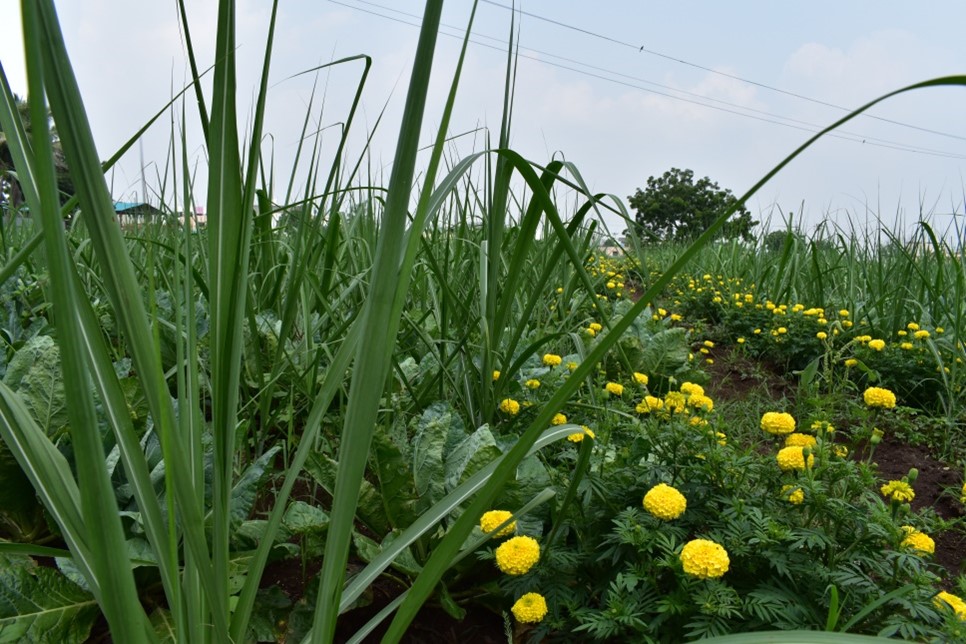
- Particle mulches. Particle mulches are composed of a mass of material spread on the ground, loose materials like straw, bark and composted municipal green waste (Figure 5.22). The particle mulch may be composed of compost, manure, straw, sawdust, rock, gravel, or any other material that covers the ground. Effectiveness of weed control is directly proportional with the thickness of the mulch layer. Weed seeds in the mulch itself can be a problem if the composting process has not been fully effective or there is contamination by windblown seeds. In straw mulches, volunteer cereal seedlings are a particular problem due to shed cereal grains and even whole ears remaining in the straw after crop harvest. There may be a risk of crop damage from herbicide or growth regulator residues remaining on straw from conventionally grown cereals. With particle mulches like straw that consist of light materials there is the possibility of them being blown around by the wind.
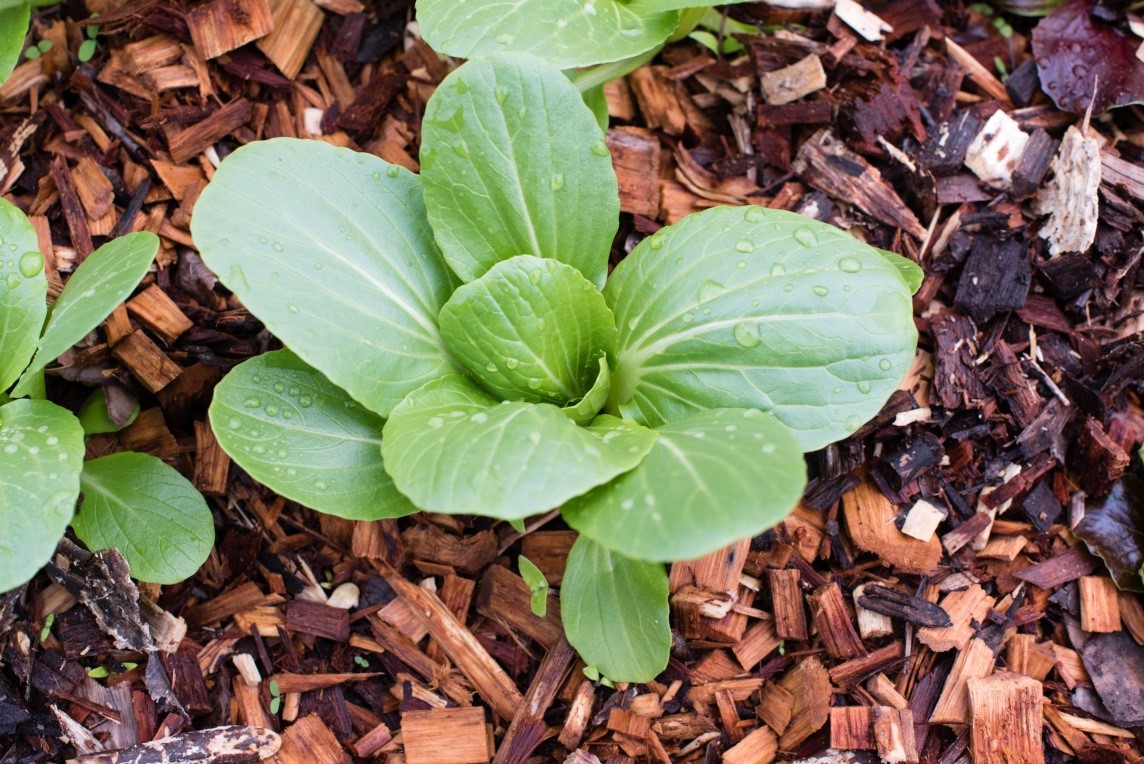
Biological weed control
Biological weed control methods apply living organisms, such as insects, nematodes, bacteria, or fungi, to reduce weed populations. Classical (or inoculative) control describes the introduction of host-specific, exotic natural enemies to control alien weeds. Inundative (or augmentative) control involves the mass production and release of native (usually) natural enemies against native (usually) weeds. The basic criteria for organic products are host specificity and durability. However, as weed populations of mixed species usually occur in the field, this (also) makes their practical applicability difficult. In a broader sense, allelopathy (secondary, inhibitory metabolic products produced by certain plants) is also included. Susceptible weeds will not die, but will suffer significant biological depreciation, so they will not be competitive partners for healthy crops. Preventive cultural practices, together with physical controls such as cultivation, flaming, and mulching, normally include into an organic farm’s weed management strategy, with biological products or agents playing at most a minor role. However, biological processes may contribute to the efficacy of practices such as cover cropping, mulching, crop rotation, and farm diversification in reducing weed pressure. Biological processes that can impact weeds include: (i) herbivory—direct consumption of weed seedlings, or foliage or roots of adult weeds, (ii) disease caused by bacteria, fungi, and other microorganisms, (iii) plant–soil–microorganism interactions that change weed vigor and competitiveness relative to the crop, (iv) allelopathy—suppression of weed growth by substances released by other plants, (v) weed seed consumption and (vi) weed seed decay.
It is essential to test biocontrol agents in detail for host specificity. Much of this is still in the research and discovery phase; however, some biological processes are sufficiently well understood and documented to be utilized as effective methods for enhancement the successful of the overall weed management program. In addition, many diversified farms utilize livestock and poultry as weed consumers, often to significant benefit.
- Allelopathy. It is the effect, when a plant releases natural substance that suppress or hinder weed seed germination and early growth (Figure 5.26). The origin of these substances can be: (i) excretion by living plant roots, (ii) leaching from foliage, and (iii) release during microbial decay of plant residues. These allelochemicals, some of which are potent enough to be considered nature’s herbicides, have the greatest impact on germinating seeds, seedlings, and young plants, retarding their growth, causing visible damage to roots or shoots, or even killing them outright. Many cover crops and a few vegetable varieties have been shown to exert significant allelopathic activity against weeds, especially young annual weeds. Cover crops in the brassica family, including rapeseed, mustards, and radishes, contain a number of compounds called mustard oil glycosides, which break down into powerful volatile allelochemicals called isothiocyanates during residue decomposition, which can affect plant growth as well as microbial activity. Well-documented examples within crops including rye, other cereal grains, sorghum, sorghum—sudangrass hybrids, forage radish and other brassicas, and sweet potatoes. Here is an example, that an allelopathic relationships can be quite specific. For example, sunflower root exudates inhibit seedling growth of wild mustard and other broadleaf weeds but have little effect on grasses. In no-till field trials, rye residues are strongly allelopathic against Amaranthus sp. and Chenopodium album, but not ragweed. There are some cases, when allelopathy is not so effective. Transplants and large seeds are less responsive to allelopathic suppression due to their deep plantation, the allelochemicals produced by a cover crop mulch are concentrated above the soil surface. As specific allelopathic relationships become better understood, crop rotations and cropping systems can be designed to give crops an edge over the major weeds present in a given field. Unlike direct competition, allelopathic weed suppression can persist for a few weeks after a cover crop is terminated. Tilling the top growth in as a green manure causes an intense but relatively brief burst of allelopathic activity throughout the till depth. Leaving the residues on the surface as an in situ mulch creates a shallow (less than 2.5 cm) but more persistent allelopathic zone that can last for three to ten weeks depending on weather conditions.
- Soil microbiota. The ability of the soil’s microbiota to influence the growth and competitiveness of weeds relative to crops has been a subject of much fascinating research. Plant–soil–microbe relationships are highly complex, and research findings have not yet been consistent enough to warrant recommendation of procedures to introduce, encourage, or limit certain soil microbes as weed control tactics.
